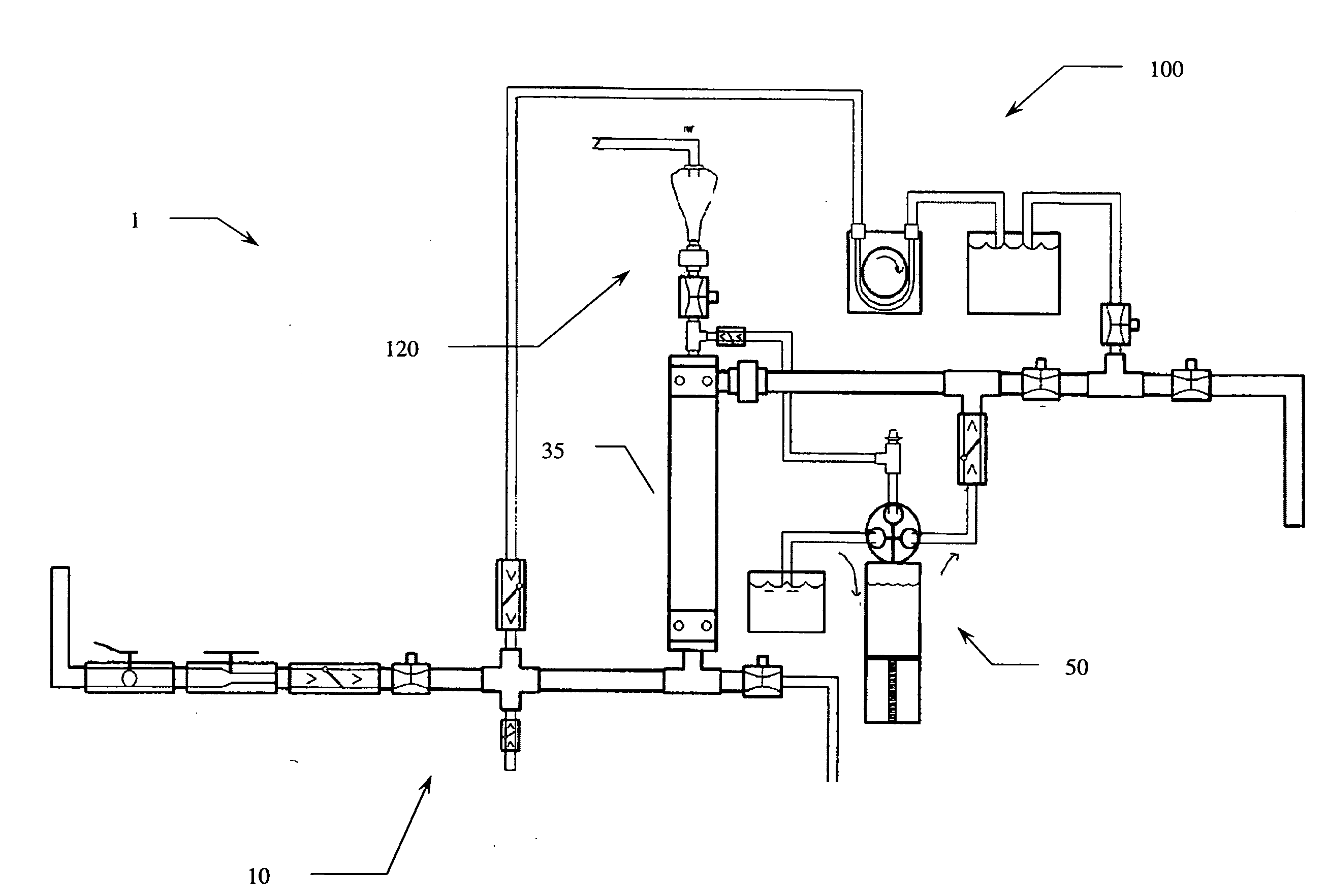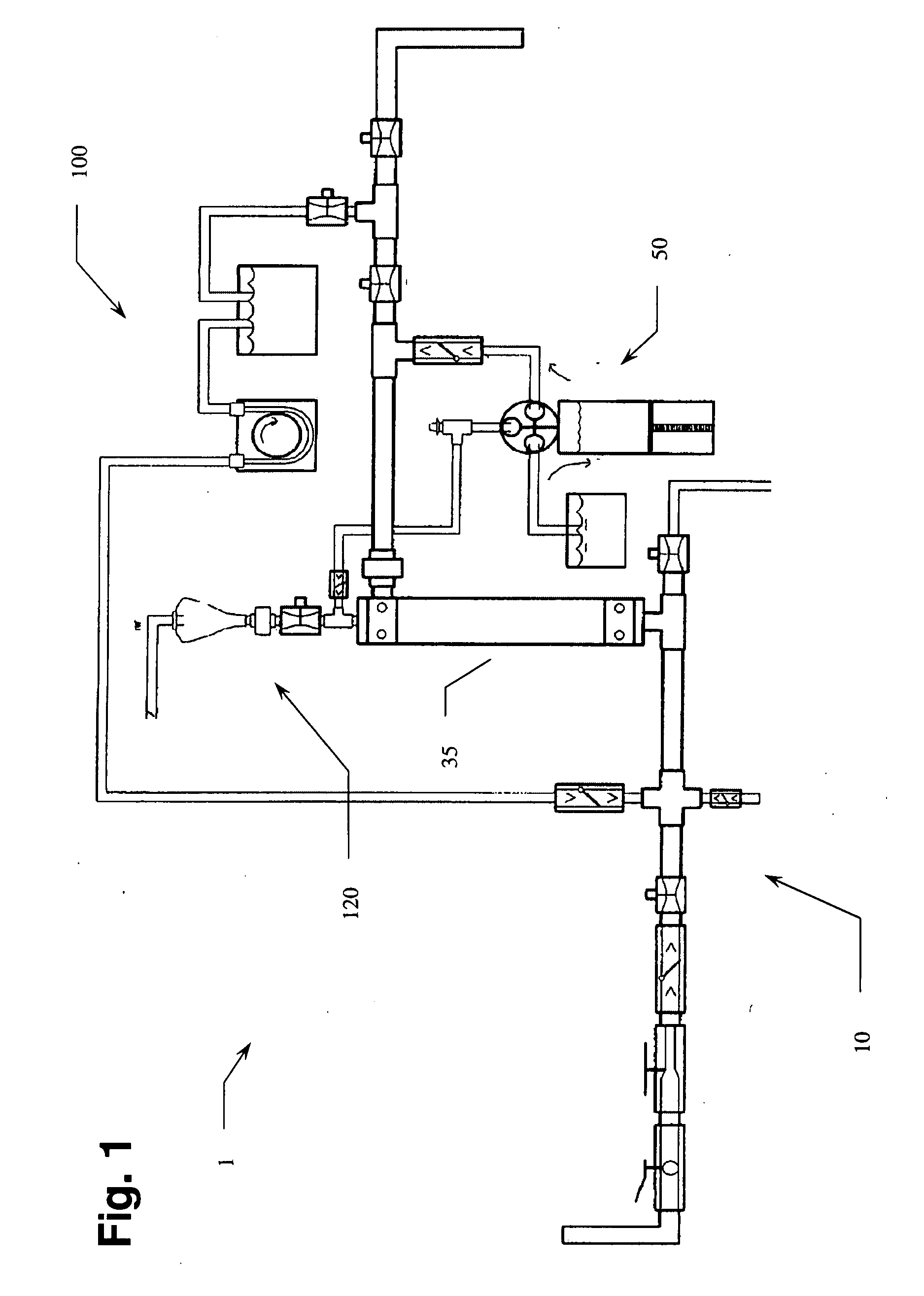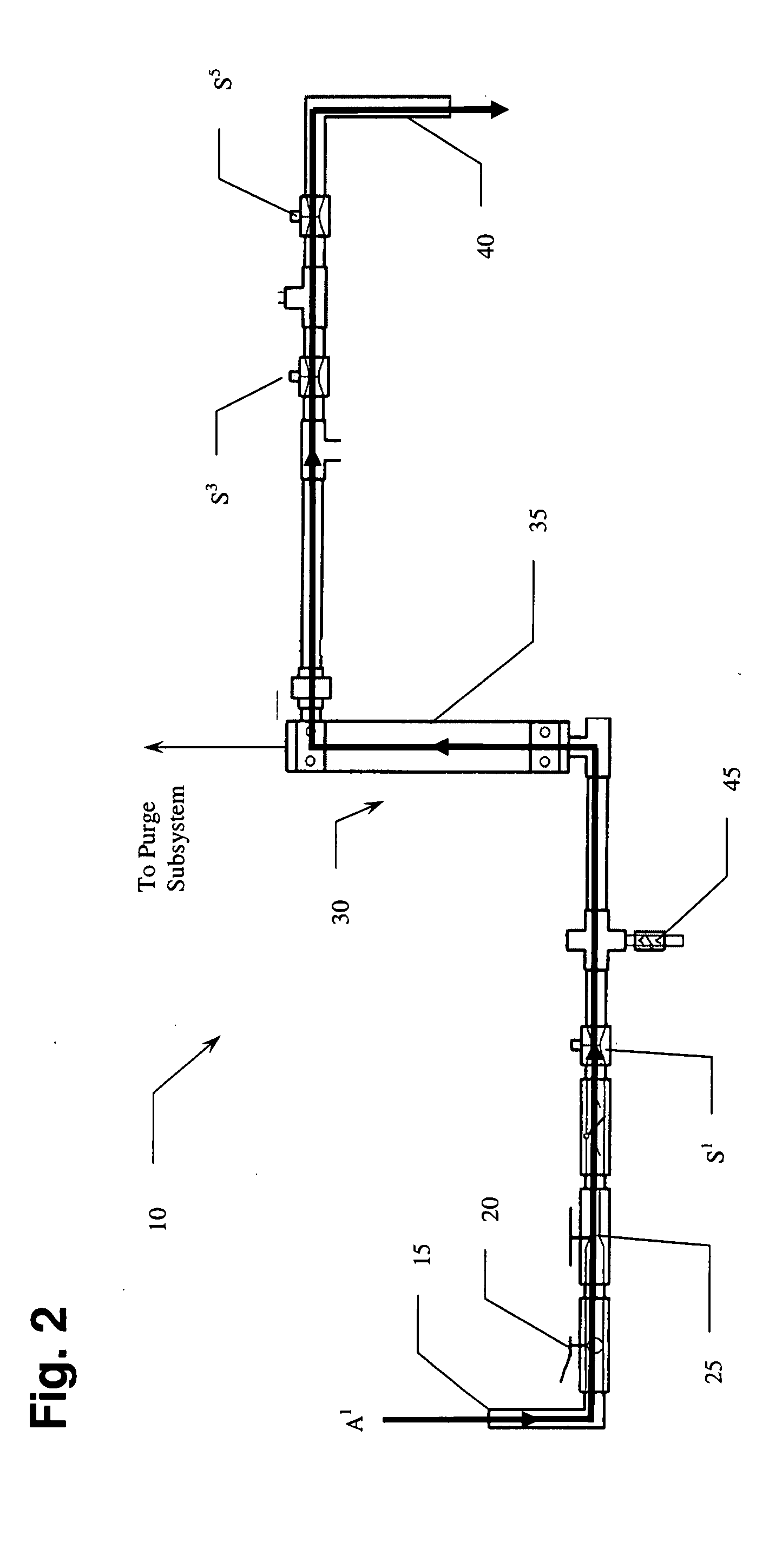Automated Concentration System
a technology of automatic concentration and concentration system, which is applied in the direction of separation process, filtration separation, instruments, etc., can solve the problems of increasing the complexity of the concentration process, requiring manual control of the system, and none of the automatic control is amenable to being automated
- Summary
- Abstract
- Description
- Claims
- Application Information
AI Technical Summary
Benefits of technology
Problems solved by technology
Method used
Image
Examples
example i
[0042]The following makes reference to the test data provided in FIGS. 6A through 6C.
[0043]Runs 1 & 2 (FIG. 6A).
[0044]A new 0.8 mm Norit filter or a used filter that had been soaking in 1% bisulfite solution preservative was used for the each test. The filter was installed and washed with water from the faucet, which was fed by drinking water. The filter was then backflushed with distilled water. The pH of permeate and recovered backflush liquid was measured during cleaning to ensure that the bisulfite was removed from the filter prior to beginning a concentration run. Prior to spiking with microspheres, water was run through the filter in the forward direction for 5-7 minutes and the transmembrane pressure and flow rate were measured.
[0045]For the tests, 700 μl of a 2.733×108 spheres / ml (in phosphate buffer, pH 7.4) concentration of fluorescent microspheres (1 μm, carboxylate-modified, yellow-green FluoSpheres, Molecular Probes, Eugene, Oreg.) were diluted into 10 mls distilled wat...
example ii
[0055]FIG. 7 shows the results of several tests of the inventive system after it was fully automated and connected to a WAMO ABS and / or WAMO TDU. All runs were done using the same protocol for recovering sample (concentrate) from the filter. The backflush solution was sterile deionized water. Spore concentrations were based on viable counts on TSA and are expressed as CFU / mL. Although this method is known to underestimate spore concentration because not all the spores will germinate, it was better than direct microscopic counts because particulates in the concentrate made it impossible to accurately identify and count spores. Improved methods of calculating spore concentrations are being investigated. Experiment #11 is a continuous concentration experiment in which the concentrator was programmed to run in a repetitive mode, consisting of 6-hour concentration intervals followed by sample recovery, for approximately 3½ days. Near the end of a 6 hour concentration period, the system w...
PUM
| Property | Measurement | Unit |
|---|---|---|
| Volume | aaaaa | aaaaa |
| Volume | aaaaa | aaaaa |
| Volume | aaaaa | aaaaa |
Abstract
Description
Claims
Application Information
 Login to View More
Login to View More - R&D
- Intellectual Property
- Life Sciences
- Materials
- Tech Scout
- Unparalleled Data Quality
- Higher Quality Content
- 60% Fewer Hallucinations
Browse by: Latest US Patents, China's latest patents, Technical Efficacy Thesaurus, Application Domain, Technology Topic, Popular Technical Reports.
© 2025 PatSnap. All rights reserved.Legal|Privacy policy|Modern Slavery Act Transparency Statement|Sitemap|About US| Contact US: help@patsnap.com



